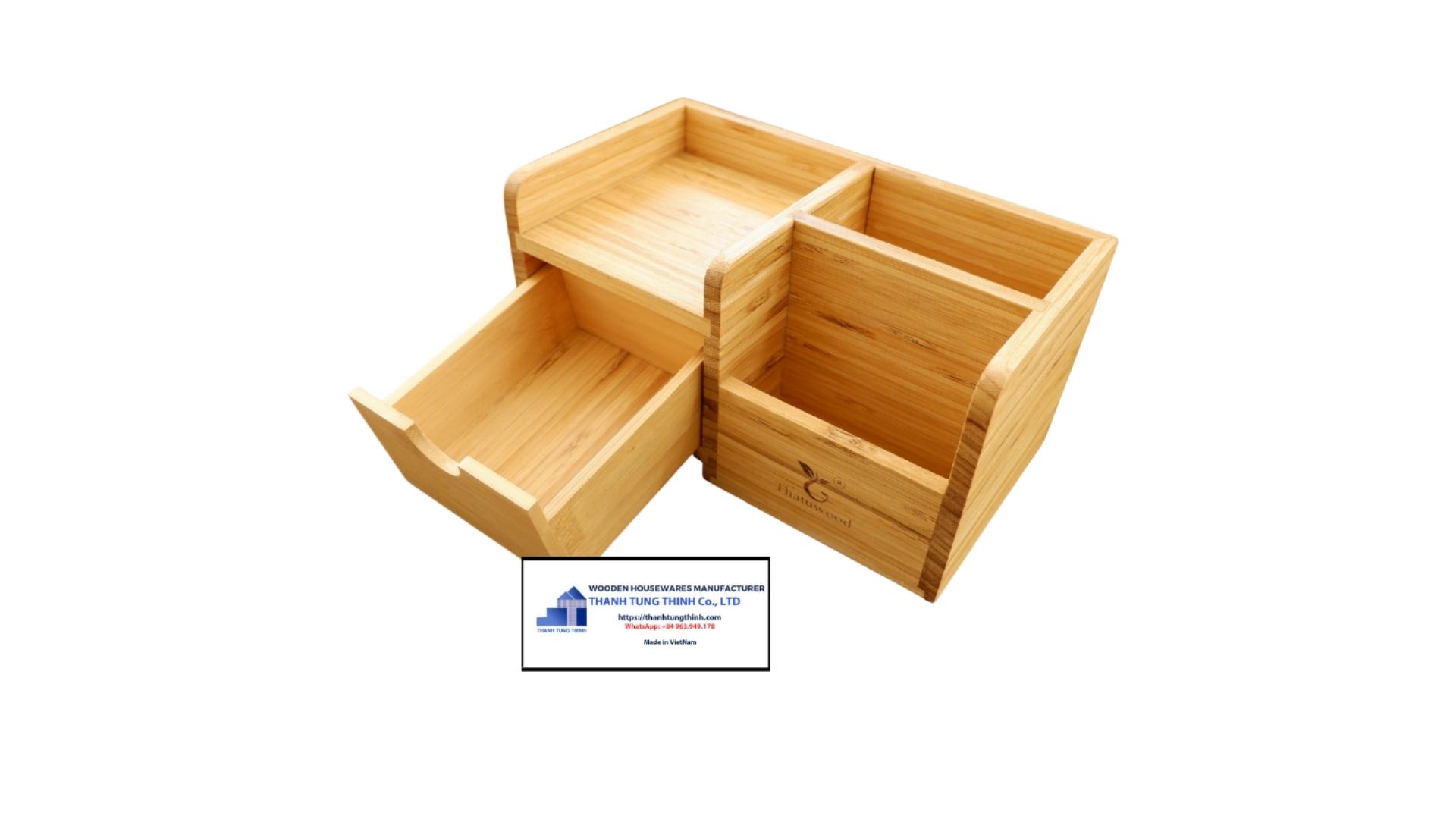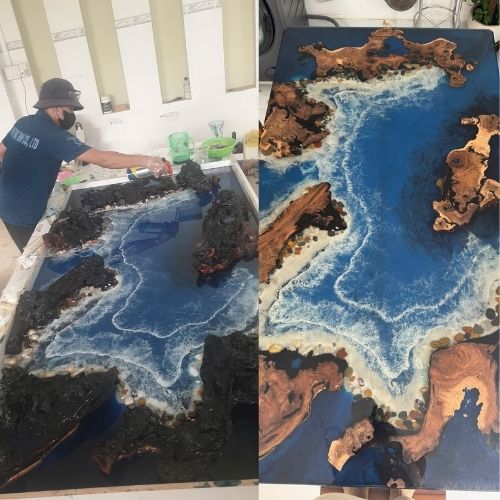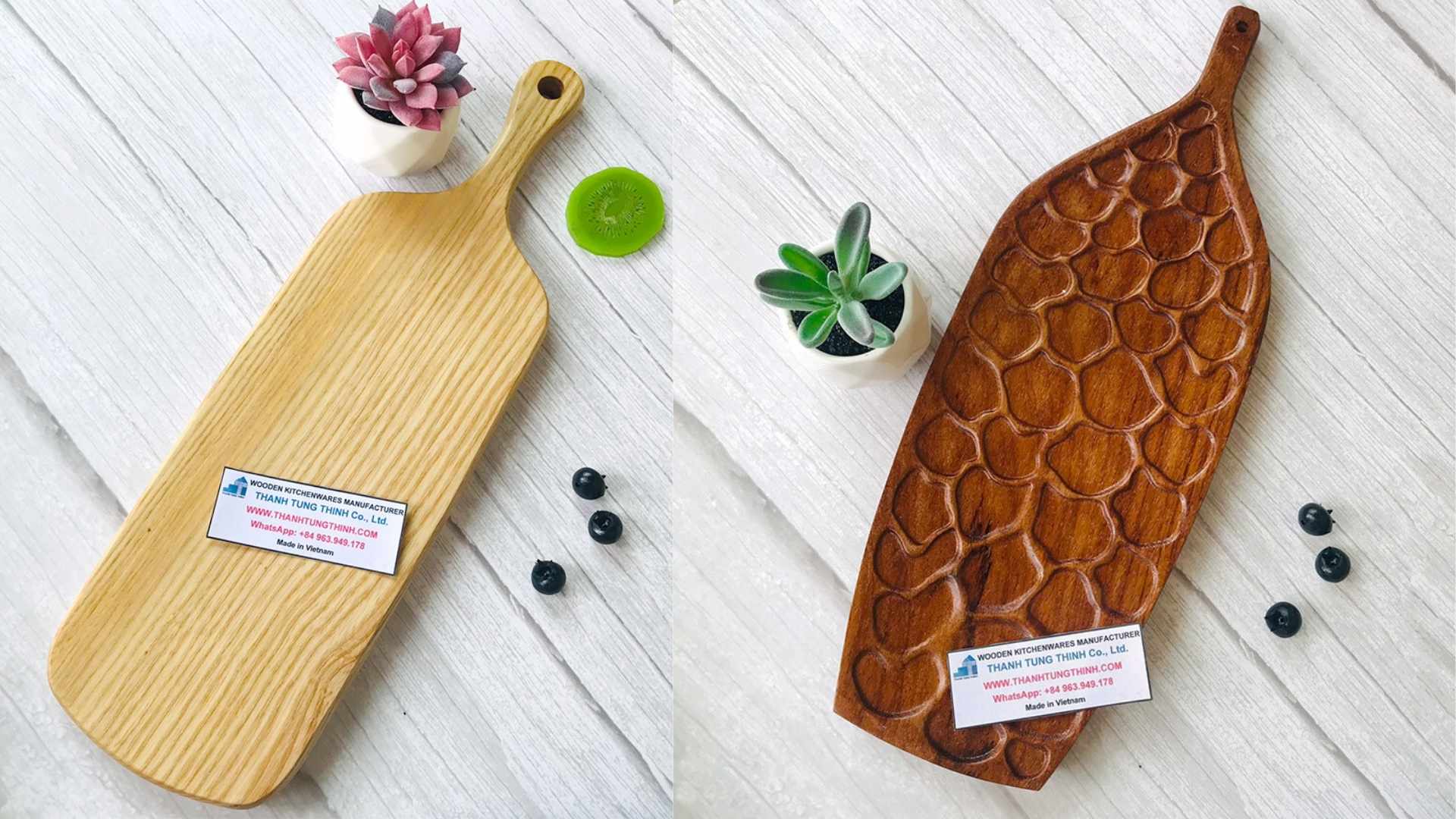10 Mẹo Quan Trọng Khi Hợp Tác Với Các Nhà Sản Xuất Sản Phẩm Gỗ Việt Nam
Việt Nam đã trở thành một đối thủ cạnh tranh mạnh mẽ trên thị trường toàn cầu về các sản phẩm gỗ, nhờ vào lực lượng lao động tay nghề cao và nguồn tài nguyên thiên nhiên phong phú. Hợp tác với các nhà sản xuất sản phẩm gỗ Việt Nam có thể mang lại nhiều lợi ích cho doanh nghiệp của bạn, nhưng để tận dụng tối đa cơ hội này, việc hiểu rõ văn hóa và các thực tiễn kinh doanh địa phương là điều rất quan trọng.
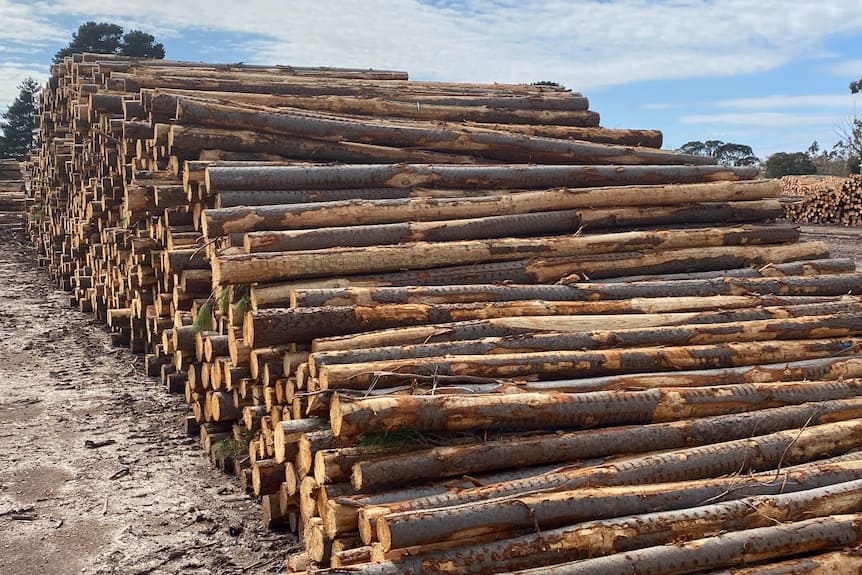
1. Hiểu Rõ Thị Trường Việt Nam
Trước khi bắt đầu hợp tác với các nhà sản xuất sản phẩm gỗ tại Việt Nam , điều quan trọng là bạn phải có cái nhìn toàn diện về thị trường, xu hướng và sở thích của người tiêu dùng. Điều này sẽ giúp bạn xác định được nhà sản xuất phù hợp có thể đáp ứng các yêu cầu sản phẩm cụ thể và đối tượng khách hàng mục tiêu của bạn.
A. Quy Mô Thị Trường và Tăng Trưởng
Thị trường sản phẩm gỗ tại Việt Nam đã và đang tăng trưởng nhanh chóng trong những năm gần đây, nhờ vào nhu cầu ngày càng tăng về đồ nội thất gỗ và thủ công mỹ nghệ từ cả thị trường trong nước và quốc tế. Hãy chắc chắn theo dõi các báo cáo ngành và thống kê mới nhất để luôn cập nhật về quy mô thị trường và các xu hướng tăng trưởng.
B. Sở Thích Người Tiêu Dùng
Việc hiểu rõ sở thích của người tiêu dùng Việt Nam đối với các sản phẩm gỗ là rất quan trọng. Điều này sẽ giúp bạn điều chỉnh các sản phẩm của mình để phục vụ hiệu quả thị trường địa phương. Một số xu hướng phổ biến trong thị trường sản phẩm gỗ Việt Nam bao gồm vật liệu thân thiện với môi trường, thiết kế tối giản và ưa chuộng thủ công truyền thống.
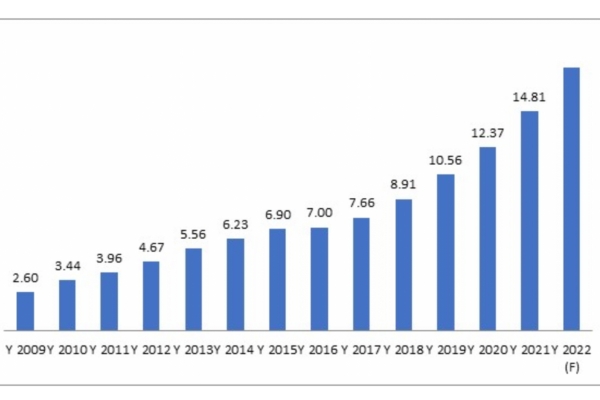
Liên Quan: “Kinh Nghiệm Tìm Kiếm Các Nhà Sản Xuất Sản Phẩm Gỗ Tại Việt Nam”
2. Chọn Nhà Sản Xuất Phù Hợp
Lựa chọn đúng nhà sản xuất sản phẩm gỗ Việt Nam là một bước quan trọng để đảm bảo sự thành công trong hợp tác của bạn. Hãy cân nhắc các yếu tố sau khi chọn nhà sản xuất:
A. Kinh Nghiệm và Chuyên Môn
Tìm kiếm các nhà sản xuất có thành tích đáng tin cậy trong ngành công nghiệp sản phẩm gỗ. Họ cần có kinh nghiệm trong việc sản xuất loại sản phẩm mà bạn yêu cầu và có thể chứng minh chuyên môn của mình thông qua danh mục các dự án trước đây.
B. Chất Lượng và Tuân Thủ
Đảm bảo rằng nhà sản xuất bạn chọn tuân thủ các tiêu chuẩn chất lượng nghiêm ngặt và tuân thủ các quy định liên quan, chẳng hạn như chứng nhận của Hội đồng Quản lý Rừng (FSC). Điều này sẽ giúp đảm bảo rằng sản phẩm của bạn không chỉ có chất lượng cao mà còn bền vững và thân thiện với môi trường.
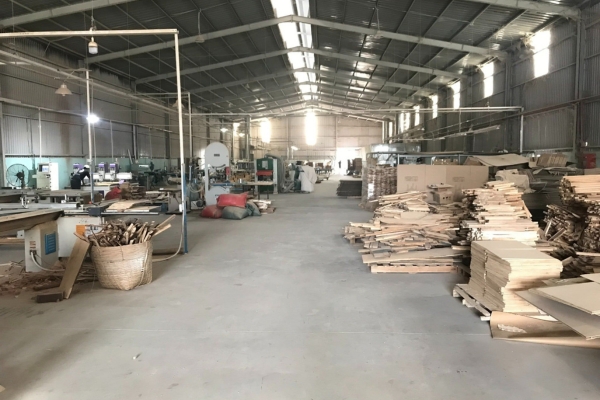
C. Năng Lực Sản Xuất
Chọn nhà sản xuất có năng lực đáp ứng yêu cầu sản xuất của bạn. Điều này không chỉ bao gồm số lượng sản phẩm mà còn khả năng sản xuất đa dạng các loại mặt hàng phục vụ cho các phân khúc thị trường khác nhau.
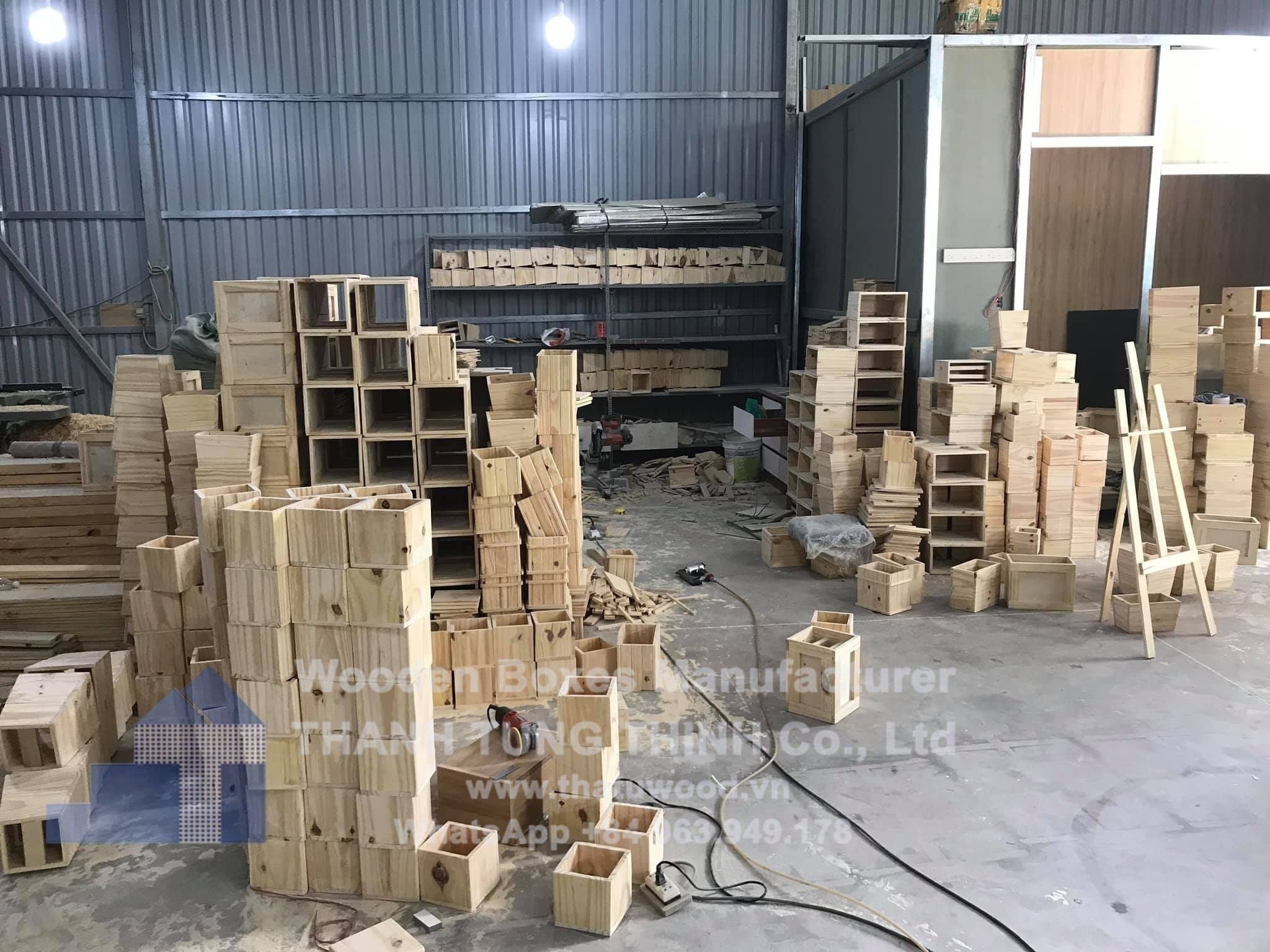
3. Xây Dựng Mối Quan Hệ Cá Nhân
Trong văn hóa kinh doanh Việt Nam, mối quan hệ cá nhân đóng vai trò quan trọng trong việc xây dựng lòng tin và thúc đẩy các hợp tác thành công. Việc đầu tư thời gian và công sức để xây dựng mối quan hệ vững chắc với nhà sản xuất Việt Nam của bạn là điều cần thiết.
A. Các Cuộc Họp Trực Tiếp
Khi có thể, hãy sắp xếp các cuộc họp trực tiếp với các đối tác kinh doanh tiềm năng. Điều này không chỉ giúp thiết lập các mối quan hệ cá nhân mà còn cho phép bạn đánh giá cơ sở vật chất và khả năng sản xuất của họ trực tiếp.
B. Học Ngôn Ngữ
Mặc dù tiếng Anh ngày càng phổ biến ở Việt Nam, nhưng việc học một số câu cơ bản bằng tiếng Việt có thể giúp bạn xây dựng mối quan hệ tốt với đối tác kinh doanh. Những lời chào đơn giản như "xin chào" và "cảm ơn" có thể tạo ấn tượng tích cực và giúp giao tiếp dễ dàng hơn.

Tìm Hiểu Thêm: "Công Ty Sản Xuất Sản Phẩm Gỗ Theo Yêu Cầu Chuyên Nghiệp Uy Tín Tại Đông Nam Á."
C. Tôn Trọng Phong Tục và Truyền Thống Địa Phương
Thể hiện sự tôn trọng đối với văn hóa Việt Nam bằng cách tuân thủ các phong tục và truyền thống địa phương trong suốt quá trình giao tiếp với đối tác kinh doanh. Điều này bao gồm việc chào hỏi đúng cách, trao đổi danh thiếp bằng cả hai tay và tránh các chủ đề nhạy cảm trong cuộc trò chuyện.
4. Giao Tiếp Rõ Ràng và Hiệu Quả
Giao tiếp hiệu quả là điều quan trọng trong bất kỳ sự hợp tác kinh doanh nào, đặc biệt là khi làm việc với các đối tác quốc tế. Hãy ghi nhớ những mẹo sau để đảm bảo giao tiếp suôn sẻ với nhà sản xuất sản phẩm gỗ Việt Nam của bạn:
A. Đặt Mục Tiêu Rõ Ràng
Hãy vạch ra rõ ràng những kỳ vọng của bạn về các thông số kỹ thuật sản phẩm, tiêu chuẩn chất lượng, thời gian sản xuất và các yếu tố liên quan khác. Điều này sẽ giúp tránh những sự hiểu lầm và đảm bảo rằng cả hai bên đều có cùng một nhận thức.
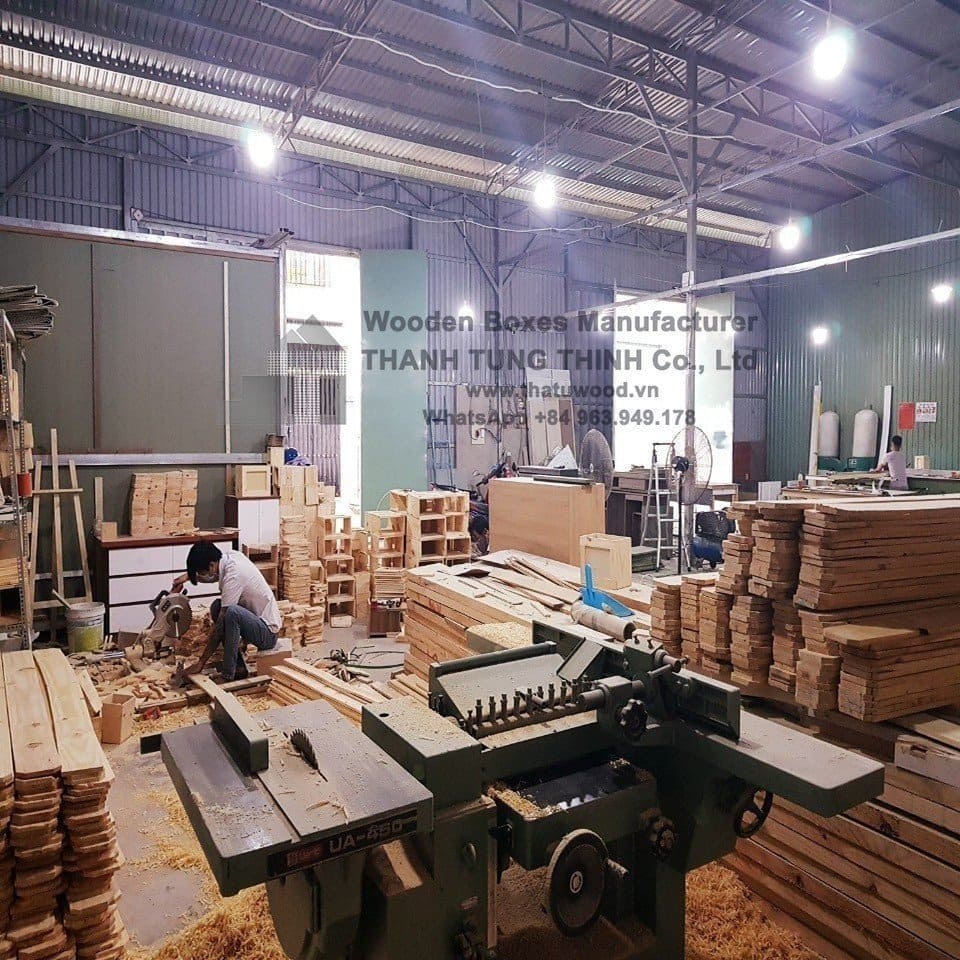
B. Sử Dụng Ngôn Ngữ Đơn Giản và Trực Tiếp
Khi giao tiếp với các đối tác kinh doanh người Việt, hãy sử dụng ngôn ngữ đơn giản và trực tiếp để tránh nhầm lẫn. Tránh sử dụng các thành ngữ, tiếng lóng hoặc biệt ngữ mà có thể không dễ hiểu đối với những người không phải là người bản ngữ tiếng Anh.
C. Xác Nhận Sự Hiểu Biết
Do sự khác biệt văn hóa, người Việt có thể nói "vâng" để chỉ ra rằng họ hiểu quan điểm của bạn, thay vì đồng ý với nó. Hãy chắc chắn theo dõi và xác nhận sự hiểu biết của bạn với các đối tác kinh doanh để tránh những sự hiểu lầm.

5. Đàm Phán Công Bằng và Tôn Trọng
Đàm phán là một yếu tố quan trọng trong việc kinh doanh tại Việt Nam, và việc tiếp cận với sự công bằng và tôn trọng là rất quan trọng. Hãy ghi nhớ những mẹo sau khi đàm phán với nhà sản xuất sản phẩm gỗ Việt Nam của bạn:
A. Chuẩn Bị Kỹ Lưỡng
Tiến hành nghiên cứu kỹ lưỡng về giá cả thị trường, tiêu chuẩn ngành và nền tảng của nhà sản xuất để đảm bảo bạn đã chuẩn bị tốt cho việc đàm phán. Điều này sẽ giúp bạn đưa ra các quyết định thông minh và tránh bị lợi dụng.
B. Thể Hiện Sự Linh Hoạt
Hãy chuẩn bị để thể hiện sự linh hoạt trong quá trình đàm phán, vì các doanh nhân Việt Nam thường đánh giá cao cách tiếp cận hợp tác và hòa hợp. Điều này có thể bao gồm việc nhượng bộ hoặc đưa ra các ưu đãi bổ sung để đạt được một thỏa thuận có lợi cho cả hai bên.
C. Giữ Giọng Điệu Tôn Trọng
Trong suốt quá trình đàm phán, hãy duy trì một giọng điệu tôn trọng và tránh các chiến thuật hung hăng hoặc hành vi đối đầu. Điều này sẽ giúp bạn xây dựng lòng tin với các đối tác kinh doanh người Việt và thúc đẩy mối quan hệ làm việc tích cực.
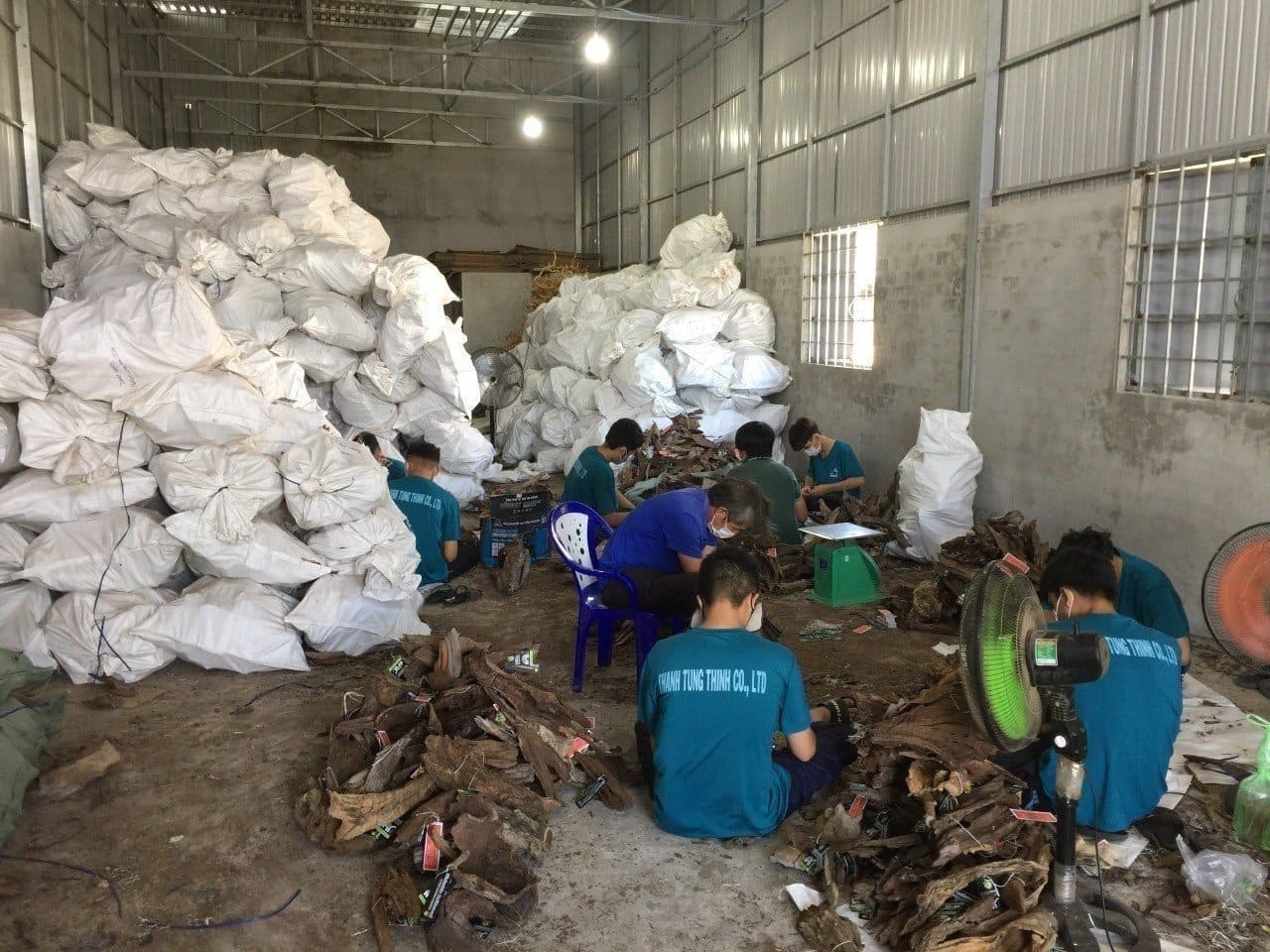
6. Thiết Lập Hợp Đồng Rõ Ràng
Sau khi đạt được thỏa thuận với nhà sản xuất sản phẩm gỗ Việt Nam, điều quan trọng là phải thiết lập một hợp đồng rõ ràng, bằng văn bản, nêu rõ các điều khoản và điều kiện hợp tác của bạn.
A. Bao Gồm Các Thông Số Chi Tiết
Đảm bảo rằng hợp đồng của bạn bao gồm các thông số chi tiết về sản phẩm, bao gồm vật liệu, kích thước, hoàn thiện, đóng gói và các yếu tố liên quan khác. Điều này sẽ giúp tránh hiểu lầm và đảm bảo rằng nhà sản xuất của bạn cung cấp các sản phẩm đáp ứng đúng mong đợi của bạn.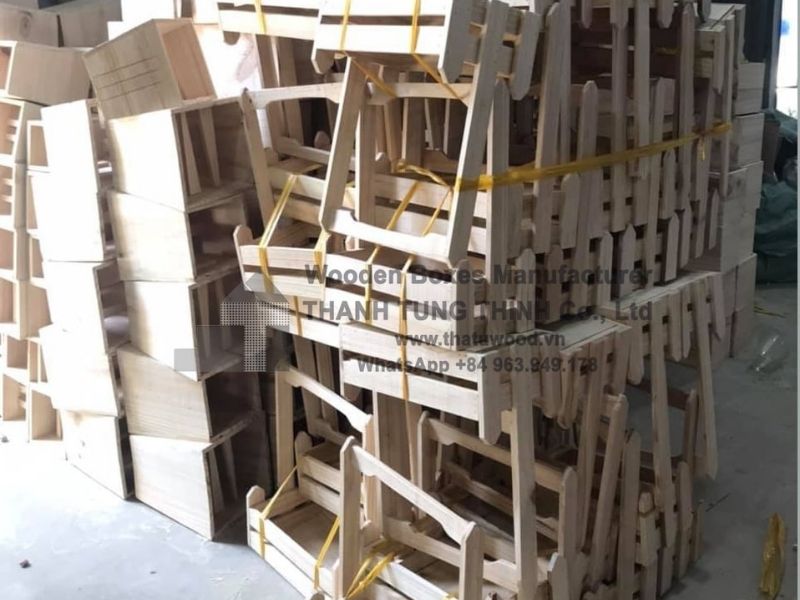
B. Xác Định Điều Khoản Giao Hàng và Thanh Toán
Nêu rõ các điều khoản giao hàng và thanh toán trong hợp đồng của bạn, bao gồm thời gian sản xuất, phương thức vận chuyển và lịch trình thanh toán. Điều này sẽ giúp đảm bảo sự hợp tác suôn sẻ và giảm thiểu rủi ro tranh chấp hoặc chậm trễ.
C. Giải Quyết Tranh Chấp
Bao gồm một điều khoản giải quyết tranh chấp trong hợp đồng của bạn, chỉ rõ cách thức giải quyết bất kỳ sự bất đồng hoặc mâu thuẫn nào. Điều này có thể giúp ngăn ngừa các tranh chấp pháp lý tốn kém và mất thời gian, đồng thời đảm bảo giải quyết công bằng bất kỳ vấn đề nào có thể phát sinh.
7. Giám Sát Quá Trình Sản Xuất và Kiểm Soát Chất Lượng
Để đảm bảo rằng sản phẩm của bạn đáp ứng đúng mong đợi và tiêu chuẩn chất lượng, điều quan trọng là phải giám sát chặt chẽ quá trình sản xuất và các biện pháp kiểm soát chất lượng mà nhà sản xuất gỗ Việt Nam của bạn áp dụng.
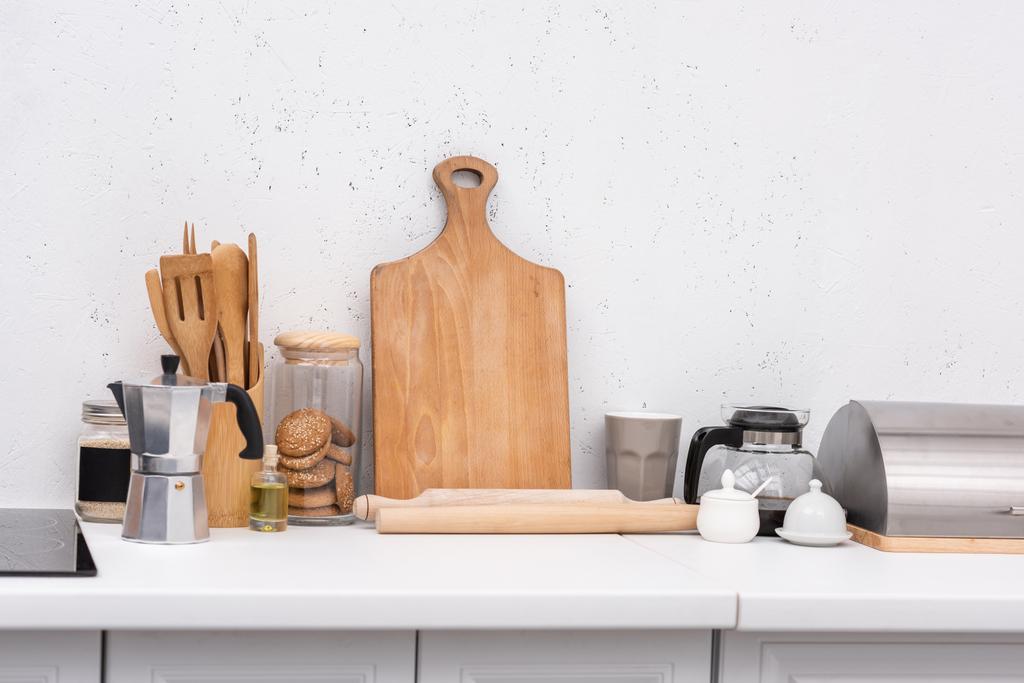
Xem thêm Sản Phẩm Gỗ tại đây: Sản Phẩm Gỗ của Thanh Tùng Thịnh
A. Tiến Hành Kiểm Tra Định Kỳ
Sắp xếp các buổi kiểm tra định kỳ cơ sở sản xuất của nhà cung cấp để đánh giá khả năng sản xuất, quy trình kiểm soát chất lượng và việc tuân thủ các quy định về an toàn và môi trường. Điều này sẽ giúp đảm bảo rằng sản phẩm của bạn được sản xuất một cách an toàn và bền vững.
B. Yêu Cầu Mẫu và Báo Cáo Kiểm Tra
Yêu cầu mẫu sản phẩm để kiểm tra và thử nghiệm, cùng với các báo cáo kiểm tra hoặc chứng nhận liên quan. Điều này sẽ giúp đảm bảo rằng sản phẩm của bạn đáp ứng các tiêu chuẩn chất lượng và tuân thủ các quy định áp dụng.
C. Triển Khai Hệ Thống Quản Lý Chất Lượng
Hợp tác với nhà sản xuất của bạn để triển khai hệ thống quản lý chất lượng, chẳng hạn như tiêu chuẩn ISO 9001, nhằm đảm bảo chất lượng đồng nhất cho toàn bộ dòng sản phẩm. Điều này sẽ giúp bạn duy trì các tiêu chuẩn chất lượng cao và nâng cao sự hài lòng của khách hàng.
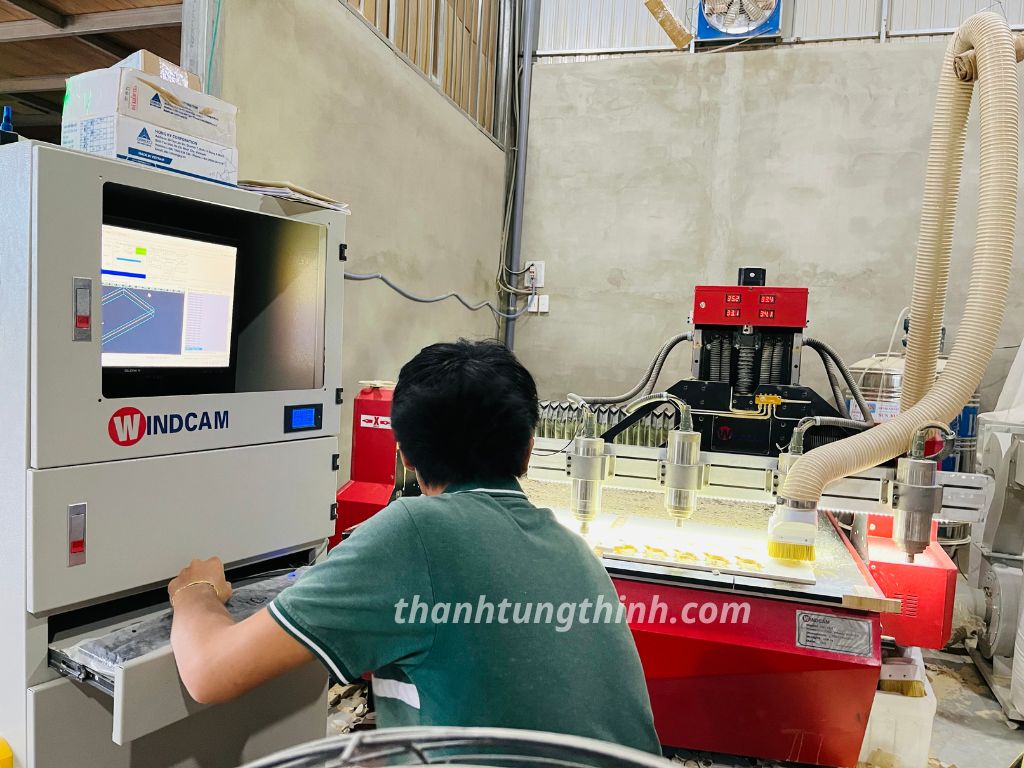
8. Xây Dựng Mối Quan Hệ Dài Hạn
Xây dựng mối quan hệ dài hạn với nhà sản xuất sản phẩm gỗ Việt Nam của bạn có thể mang lại những lợi ích đáng kể cho doanh nghiệp, bao gồm giá cả tốt hơn, chất lượng cải thiện và tiếp cận các sản phẩm và thị trường mới.
A. Cung Cấp Phản Hồi Định Kỳ
Cung cấp phản hồi định kỳ cho nhà sản xuất về hiệu suất, chất lượng sản phẩm và bất kỳ lĩnh vực nào cần cải thiện. Điều này sẽ giúp họ liên tục cải tiến quy trình và đáp ứng tốt hơn nhu cầu của bạn.

B. Đầu Tư Vào Xây Dựng Năng Lực
Hỗ trợ nhà sản xuất của bạn trong việc xây dựng năng lực, thông qua các chương trình đào tạo, nâng cấp công nghệ hoặc các sáng kiến khác. Điều này không chỉ giúp cải thiện hiệu suất của họ mà còn thể hiện cam kết của bạn đối với sự thành công lâu dài của hợp tác.
C. Khám Phá Các Dự Án Liên Doanh và Hợp Tác
Hãy cân nhắc khám phá các dự án liên doanh hoặc hợp tác với nhà sản xuất Việt Nam của bạn để mở rộng các sản phẩm cung cấp, tiếp cận các thị trường mới hoặc tận dụng chuyên môn địa phương của họ. Điều này có thể giúp bạn phát triển doanh nghiệp và củng cố mối quan hệ với nhà sản xuất.

9. Nắm Vững Các Yêu Cầu Pháp Lý và Quy Định
Khi hợp tác với các nhà sản xuất sản phẩm gỗ Việt Nam, điều quan trọng là phải nắm vững các yêu cầu pháp lý và quy định có thể áp dụng đối với sản phẩm và hoạt động của bạn.
A. Quy Định Về Nhập Khẩu và Xuất Khẩu
Hãy làm quen với các quy định về nhập khẩu và xuất khẩu áp dụng cho sản phẩm của bạn, bao gồm bất kỳ thuế suất, thuế hoặc yêu cầu tài liệu nào. Điều này sẽ giúp đảm bảo quá trình vận chuyển diễn ra suôn sẻ và tránh được các sự chậm trễ hoặc hình phạt.
B. An Toàn và Tuân Thủ Sản Phẩm
Đảm bảo rằng sản phẩm của bạn đáp ứng các quy định an toàn và tuân thủ có liên quan, chẳng hạn như nhãn CE của Liên minh Châu Âu hoặc Đạo luật Cải Tiến An Toàn Sản Phẩm Tiêu Dùng (CPSIA) của Hoa Kỳ. Điều này sẽ giúp bảo vệ khách hàng của bạn và giảm thiểu rủi ro thu hồi sản phẩm hoặc hành động pháp lý.
C. Bảo Vệ Sở Hữu trí Tuệ
Bảo vệ sở hữu trí tuệ của bạn bằng cách đăng ký nhãn hiệu, bằng sáng chế hoặc bản quyền khi cần thiết. Điều này sẽ giúp ngăn chặn việc sử dụng trái phép các thiết kế, logo hoặc tên sản phẩm của bạn và duy trì lợi thế cạnh tranh trên thị trường.
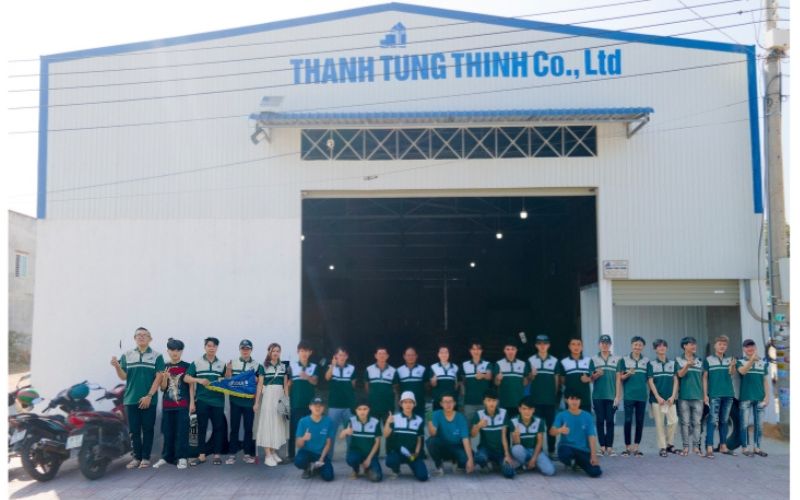
10. Cập Nhật Các Phát Triển Trong Ngành
Để duy trì lợi thế cạnh tranh và tận dụng tối đa sự hợp tác với các nhà sản xuất sản phẩm gỗ Việt Nam, điều quan trọng là phải cập nhật các phát triển, xu hướng và đổi mới mới nhất trong ngành.
A. Tham Gia Các Hội Chợ Thương Mại và Triển Lãm
Tham gia các hội chợ thương mại và triển lãm tập trung vào ngành sản phẩm gỗ, cả ở Việt Nam và quốc tế. Điều này sẽ giúp bạn cập nhật về các sản phẩm mới, công nghệ và xu hướng thị trường, cũng như kết nối với các khách hàng và nhà cung cấp tiềm năng.
B. Tham Gia Các Hiệp Hội Ngành và Diễn Đàn Trực Tuyến
Tham gia các hiệp hội ngành và diễn đàn trực tuyến liên quan đến ngành sản phẩm gỗ để tiếp cận các tài nguyên giá trị, chia sẻ kinh nghiệm và học hỏi từ chuyên môn của những người khác trong ngành của bạn.

C. Theo Dõi Các Đối Thủ và Xu Hướng Thị Trường
Hãy theo dõi chặt chẽ các đối thủ và xu hướng thị trường để nhận diện những cơ hội và thách thức mới có thể ảnh hưởng đến sự hợp tác của bạn với các nhà sản xuất sản phẩm gỗ Việt Nam. Điều này sẽ giúp bạn đi trước đối thủ và điều chỉnh chiến lược kinh doanh khi cần thiết.
Bằng cách tuân thủ 10 lời khuyên thiết yếu này, bạn có thể hợp tác thành công với các nhà sản xuất sản phẩm gỗ Việt Nam và thu được lợi ích từ ngành sản phẩm gỗ sôi động và đang phát triển của Việt Nam. Hãy tiếp thu những khác biệt văn hóa độc đáo, xây dựng mối quan hệ vững chắc, và tập trung vào chất lượng và đổi mới để đảm bảo một đối tác hợp tác lâu dài và thành công.



